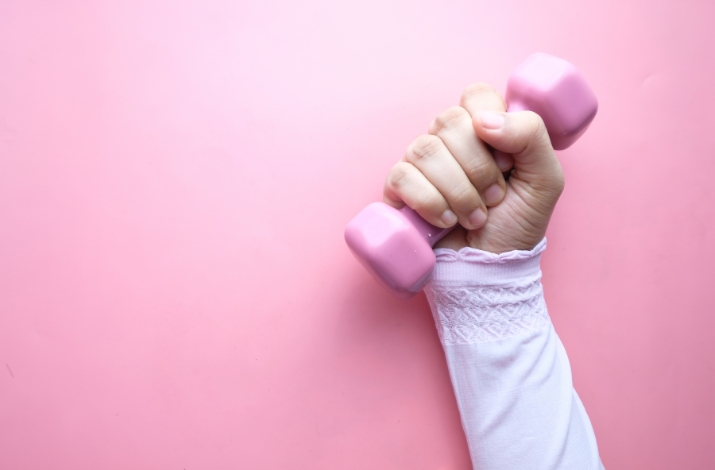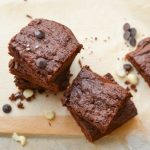Why Exercise Matters for Weight Loss

When it comes to losing weight or maintaining a healthy body weight, most of us think of dieting as the first and only solution. However, physical activity is just as important, if not more so, for long-term success. Finding the right balance of exercise, intensity, and consistency can make a big difference. Let’s break down how physical activity works for weight loss and why it’s so effective for weight maintenance.
Why Exercise Matters for Weight Loss and Maintenance
Losing weight boils down to a simple principle of using more calories than you store. There are nuances in your individual physiology that might change how your body responds to the calories you provide it; however, physical activity plays a major role in helping you create a caloric deficit by increasing the number of calories your body burns each day.
When you’re in a calorie deficit, your body turns to stored energy (usually glycogen and fat) to make up the difference. Over time, this leads to fat loss. Regular physical activity also offers other benefits, like increasing your resting metabolic rate (commonly termed “boosting your metabolism”), which makes it easier to keep the weight off.
According to the American College of Sports Medicine, regular exercise is key not only for shedding pounds but also for keeping them off once they’re gone.1 In fact, people who are most successful in maintaining long-term weight loss typically engage in high levels of physical activity.2
But how much should you exercise, and what types of activities are best?
The Right Amount of Exercise for Weight Loss
When it comes to physical activity for weight loss, long-term success has been best when individuals achieve approximately 200-300 minutes per week of moderate-to-vigorous intensity exercise. This translates to about 40-60 minutes a day, five to six days per week. Sounds manageable, right?
What Counts as Moderate vs. Vigorous Activity?
- Moderate-intensity exercise includes activities like brisk walking, cycling at a moderate pace, or swimming.
- Vigorous-intensity exercise involves more challenging activities like jogging, playing basketball, or engaging in a HIIT workout.
Both types of exercise have their place and mixing them up can keep things interesting. You don’t want to get stuck in a routine that feels burdensome — exercise should be fun!
Strength Training Is Key
It’s easy to think of cardio as the go-to for burning fat. However, if you’re not doing strength training, you’re missing out on one of the most powerful ways to burn calories and build a healthy body. Strength training (or resistance training) helps you build muscle, and the more muscle you have, the more calories your body burns even at rest.3
Experts recommend incorporating strength training into your routine at least two to three days per week. This doesn’t mean you have to become a bodybuilder — simple bodyweight exercises like squats, push-ups, and lunges can be incredibly effective for building lean muscle.
For the best results, combine cardiovascular exercise with strength training.3 For example, you might do cardio (like jogging, cycling, or pickleball) three times a week and strength training (like lifting weights or bodyweight exercises) twice a week.
Here’s the kicker: strength training also helps prevent muscle loss during weight loss. When you’re cutting calories, it is common to lose both fat and lean mass.4 The last thing you want is to lose the muscle you’ve worked so hard to gain, and resistance training can help you maintain and even gain muscle mass while losing fat.5
Non-Exercise Activity: Behind the scenes
In addition to structured exercise, there’s another major factor in weight loss: non-exercise activity thermogenesis (NEAT). NEAT refers to the calories you burn through everyday movements, like walking the dog, taking the stairs, or even fidgeting at your desk.
According to research, NEAT can account for a significant portion of your daily calorie burn.6 So, don’t underestimate the power of simply staying active throughout the day. Park farther away, stand up and stretch, do some desk yoga, and take regular breaks from sitting. Make it fun and interesting for yourself. The more fun you have with exercise, the more likely you are to stick with it — and consistency is the secret ingredient to weight loss and weight maintenance. So, mix it up, try new things, and keep moving!
High-Protein Diet: The Secret Weapon
While exercise is essential for weight loss, your diet plays an important role as well — particularly your protein intake.
When you’re in a calorie deficit, maintaining muscle mass can be challenging. One key is to combine resistance exercise with a high-protein diet to prevent muscle loss.7 Including high-quality protein in most of your meals throughout the day is a great start. However, many of us need a little extra help reaching our recommended protein intake for the day. The recommended daily intakes (RDIs) can be calculated by a person’s body weight. The Academy of Nutrition and Dietetics recommends that the average individual should consume at least 0.8 grams of protein per kilogram or 0.35 grams per pound of body weight per day for general health. So a person that weighs 75 kg (165 pounds) should consume an average of 60 grams of protein per day.
Stay Motivated with a Plan
Staying motivated can be tough, especially when you hit a plateau or get bored with your routine. To keep things fresh and engaging:
- Set small, achievable goals. For example, aim to add an extra 10 minutes of activity per day.
- Track your progress. Whether it’s by using a fitness app or simply jotting down what you did each day, keeping track of your workouts can help you see your progress over time.
- Reward yourself. When you hit a milestone, treat yourself to something special like a new workout outfit or a massage.
Wrap-Up: Make Exercise and Protein Your Dynamic Duo
Physical activity is a powerful tool for both weight loss and long-term weight maintenance. By incorporating a balance of moderate and vigorous exercise, along with strength training, you’ll not only shed fat but also build muscle that keeps your metabolism happy. So, get moving, stay active, and enjoy the process. When you combine the right amount of exercise, protein, and fun, you’ll be on your way to a healthier, happier you!
References
- Donnelly JE, Blair SN, Jakicic JM, et al. American College of Sports Medicine Position Stand. Appropriate physical activity intervention strategies for weight loss and prevention of weight regain for adults. Med Sci Sports Exerc. Feb 2009;41(2):459-71. doi:10.1249/MSS.0b013e3181949333
- Tate DF, Jeffery RW, Sherwood NE, Wing RR. Long-term weight losses associated with prescription of higher physical activity goals. Are higher levels of physical activity protective against weight regain? Am J Clin Nutr. Apr 2007;85(4):954-9. doi:10.1093/ajcn/85.4.954
- Pollock ML, Franklin BA, Balady GJ, et al. AHA Science Advisory. Resistance exercise in individuals with and without cardiovascular disease: benefits, rationale, safety, and prescription: An advisory from the Committee on Exercise, Rehabilitation, and Prevention, Council on Clinical Cardiology, American Heart Association; Position paper endorsed by the American College of Sports Medicine. Circulation. Feb 22 2000;101(7):828-33. doi:10.1161/01.cir.101.7.828
- Newman AB, Lee JS, Visser M, et al. Weight change and the conservation of lean mass in old age: the Health, Aging and Body Composition Study. Am J Clin Nutr. Oct 2005;82(4):872-8; quiz 915-6. doi:10.1093/ajcn/82.4.872
- Donnelly JE, Sharp T, Houmard J, et al. Muscle hypertrophy with large-scale weight loss and resistance training. Am J Clin Nutr. Oct 1993;58(4):561-5. doi:10.1093/ajcn/58.4.561
- Levine JA, Kotz CM. NEAT–non-exercise activity thermogenesis–egocentric & geocentric environmental factors vs. biological regulation. Acta Physiol Scand. Aug 2005;184(4):309-18. doi:10.1111/j.1365-201X.2005.01467.x
- Verreijen AM, Engberink MF, Memelink RG, van der Plas SE, Visser M, Weijs PJ. Effect of a high protein diet and/or resistance exercise on the preservation of fat free mass during weight loss in overweight and obese older adults: a randomized controlled trial. Nutr J. Feb 6 2017;16(1):10. doi:10.1186/s12937-017-0229-6
This article is for informational and educational purposes only. It is not, nor is it intended to be substitute for professional medical advice, diagnosis, or treatment and should never be relied upon for specific medical advice.



















